The Slovakian capital of Bratislava may be compact when compared with other capital cities in the region (Budapest, Prague and Vienna for example) but the city still has plenty to occupy the visitor for a couple of days. There’s the quaint, albeit tiny, Staré Mesto (Old Town), the dominating hilltop Castle of Bratislava, the grand Presidential Palace and one or two interesting churches all within walking distance of each other. Further afield, the view over the River Danube and neighbouring Austria from the ruins of Devín Castle are superb. Plus there is even some colourful street art near the bus station which kept Kirsty happy for an hour or so.
But for me, it was the Socialist-era architecture dotted throughout the city that I enjoyed most about the Slovakian capital and below are brief descriptions and photos of what we saw.
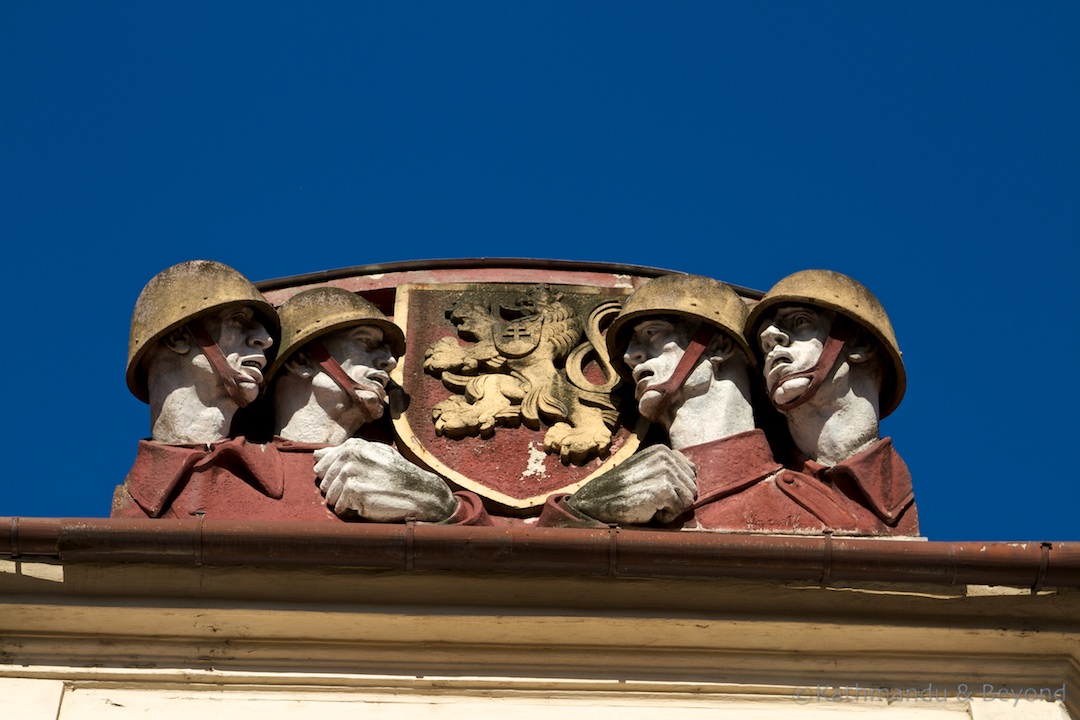
Most Slovenského národného povstania (Bridge of the Slovak National Uprising)
Most means bridge in Slovakian and Most SNP dominates the River Danube. Linking the Old Town of Bratislava with the district of Petržalka (*), work began on the bridge in the late ‘60s and was completed in 1972. For obvious reasons (see photos) the bridge is nicknamed ‘UFO Bridge’ and the ‘flying saucer’ at the top houses an expensive restaurant and observation deck which is open daily. More information can be found on the Bratislava Tourist Board’s website.
(*) Petržalka also has links to Communist times and is home to the largest socialist-era housing development in Eastern Europe known colloquially as Panelák meaning ‘panel house’ – a place built from prefabricated concrete panels.
Most SNP is the longest cable-stayed bridge in the world and a significant part of the Old Town (including most of the Jewish Quarter) was demolished in order to construct it.
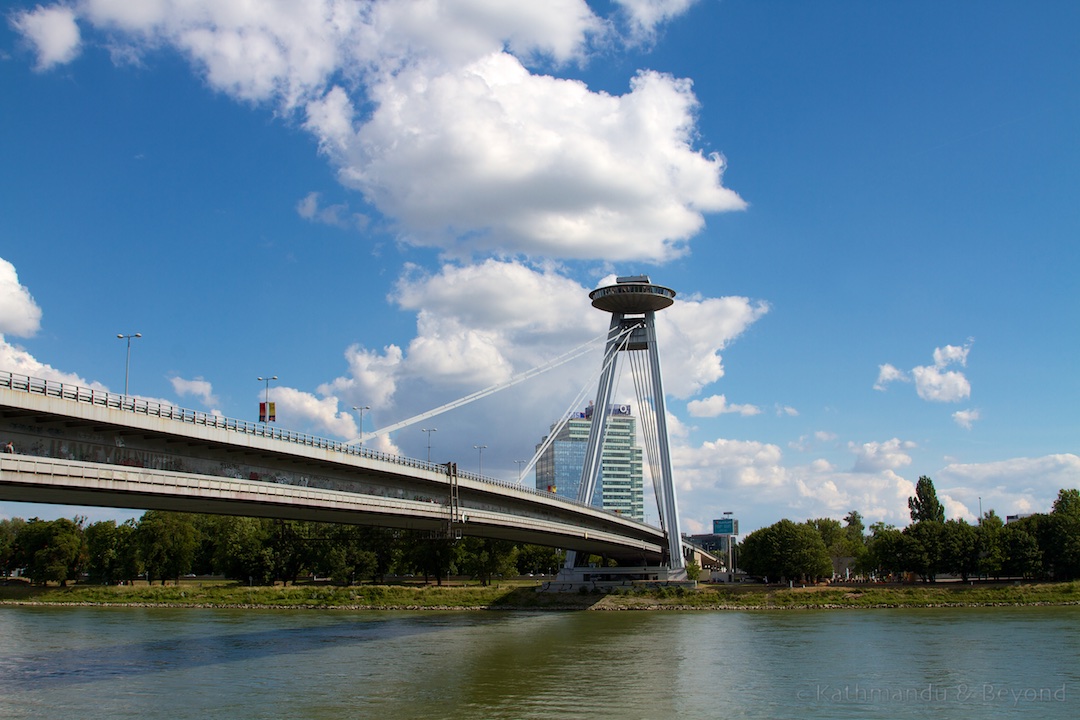 Most SNP, Bratislava
Most SNP, Bratislava
Pedestrians are allowed to walk only on the underpass section of the bridge. This is worth doing if you want to get to the other side or go to the top of the restaurant/observation deck but you won’t be able to see anything of the bridge from the underpass. For the best views of the bridge, head down to the banks of the Danube just beyond the Old Town and look up from there.
Slavin War Memorial
Slavin is a memorial and burial ground for the thousands of Soviet troops who died during the liberation of Bratislava from German oppression during the last few months of WWII.
The sheer grandeur of the solemn hall with an obelisk on top will not fail to impress but there are plenty of smaller details to take in as well. There are interesting embossed-metal and stone-carved murals and inscriptions around the base of the memorial as well as several patriotic statues, synonymous with the Soviet-era, dotted throughout the grounds. And of course, the graves themselves are kept in immaculate condition.
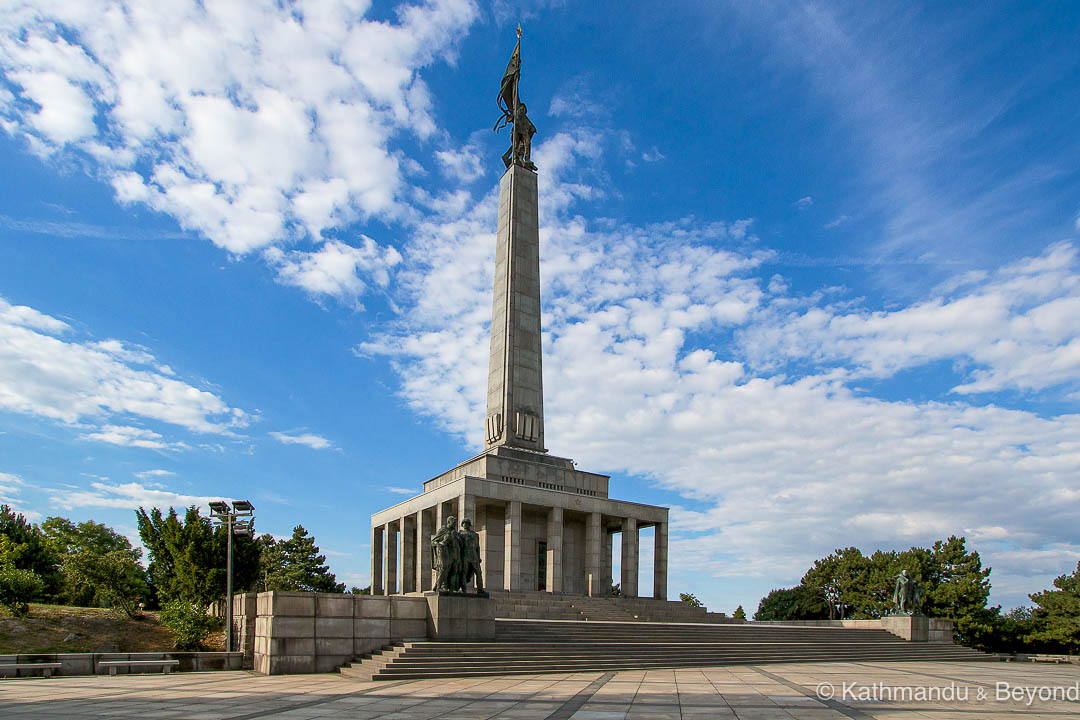 Slavin War Memorial, Bratislava
Slavin War Memorial, Bratislava
The war memorial site was built between 1957 and 1960 and is situated on a hilltop in the wealthy Malé Karpaty district of the city. There are superb panoramic views back over Bratislava from the monument. Getting to Slavin War Memorial is pretty straightforward but does involve a reasonably steep climb for about 40 minutes or so up through the winding back streets of the city from just beyond the Presidential Palace. It is also possible to walk up to the castle, have a look around and then continue walking on elevated ground to the memorial from there. We arrived at the monument around 4pm (in mid-June) and the light was perfect for photography.
If you are a fan of over-the-top, stark Socialist-style architecture then you should definitely not miss out on visiting Slavin War Memorial.
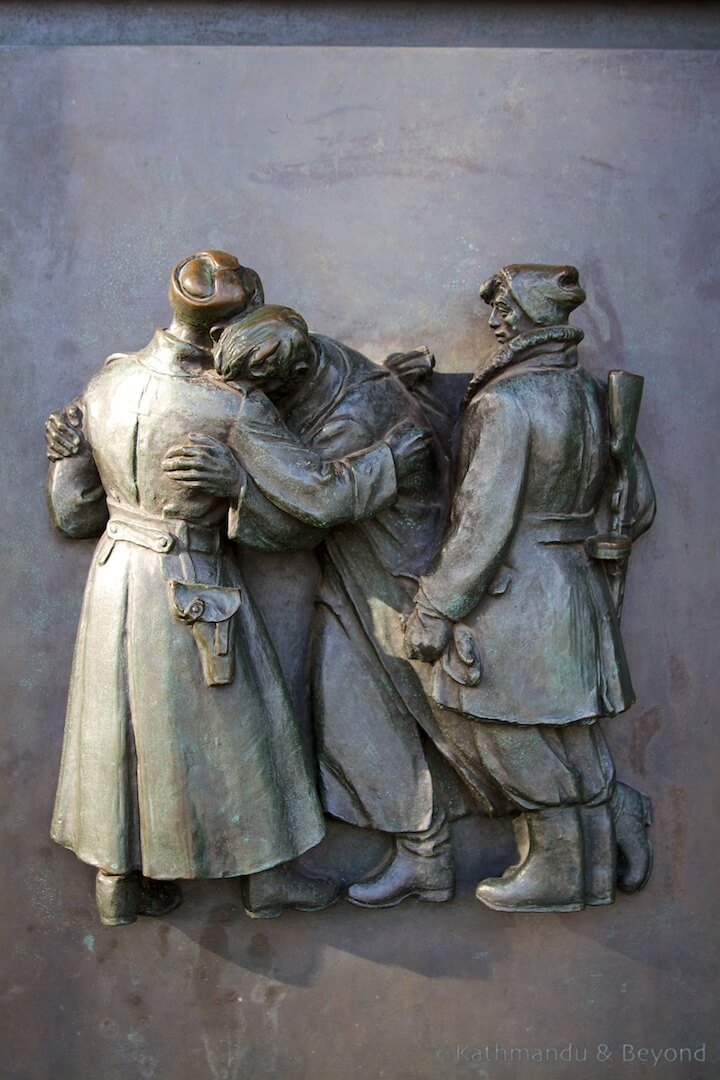
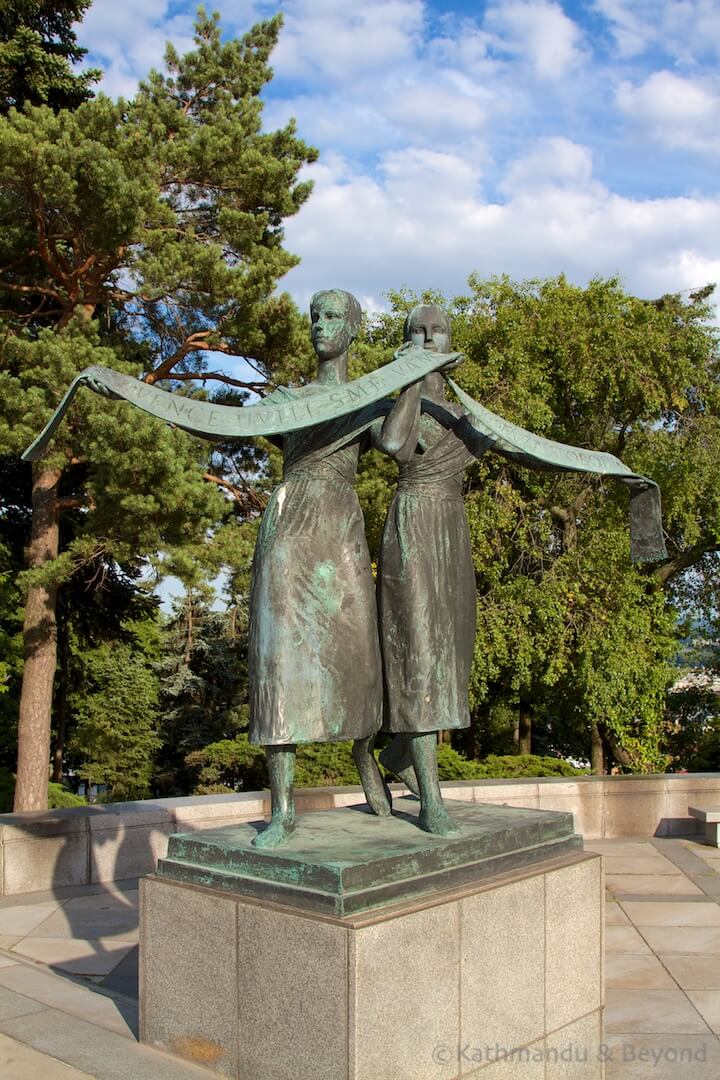
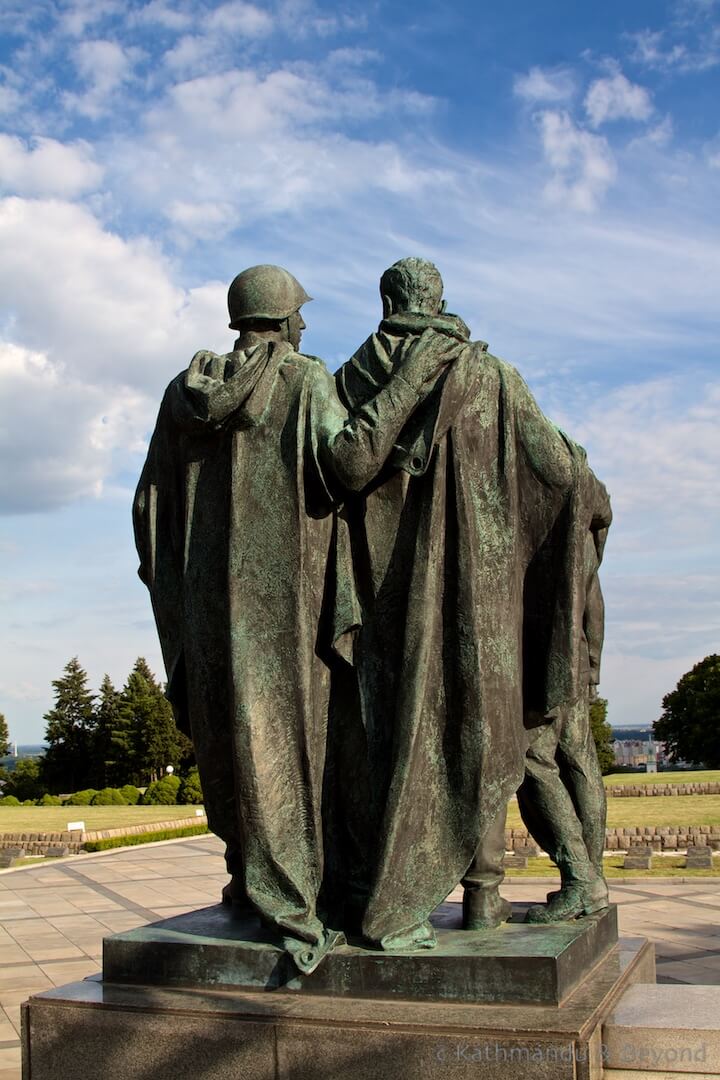
Slavin War Memorial, Bratislava
Slovensky Rozhlas (Slovak National Broadcasting Studio)
The Slovak Radio Station (as it is commonly known) is one weird-looking building. Whoever designed this upside-down concrete pyramid must have been taking some seriously good mind-bending drugs at the time? (*). The Telegraph (a well-read British newspaper) included it in their list of the 30 ugliest buildings in the world and it’s not that difficult to see why?
(*) Who says psychedelia never made it to the Eastern Block?
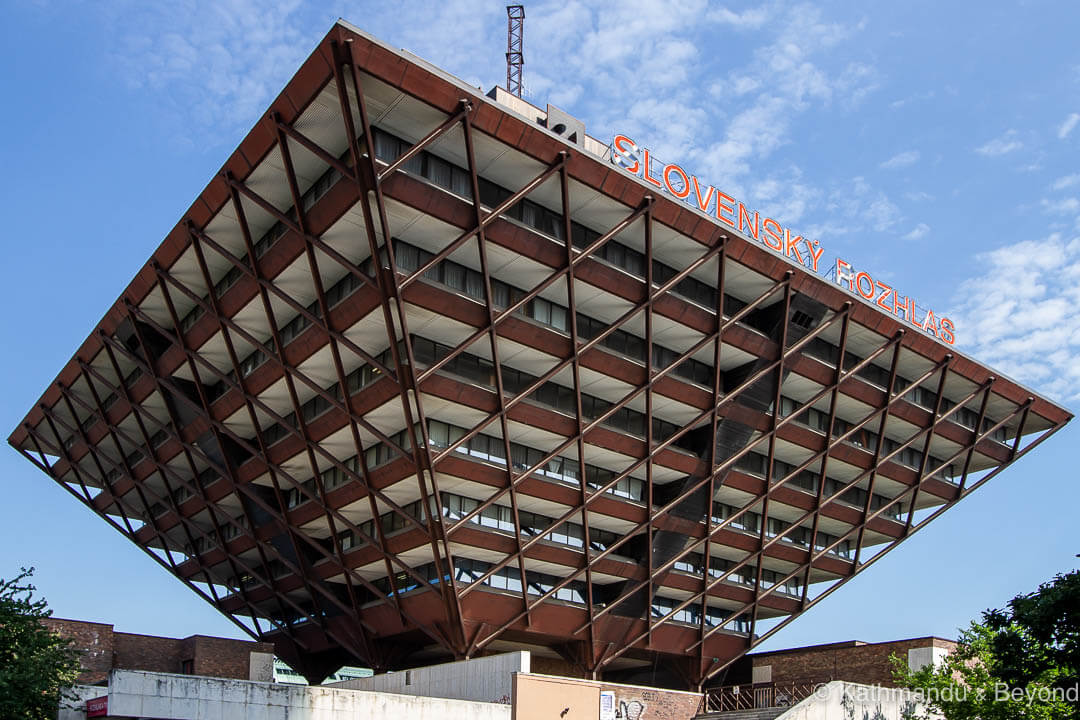
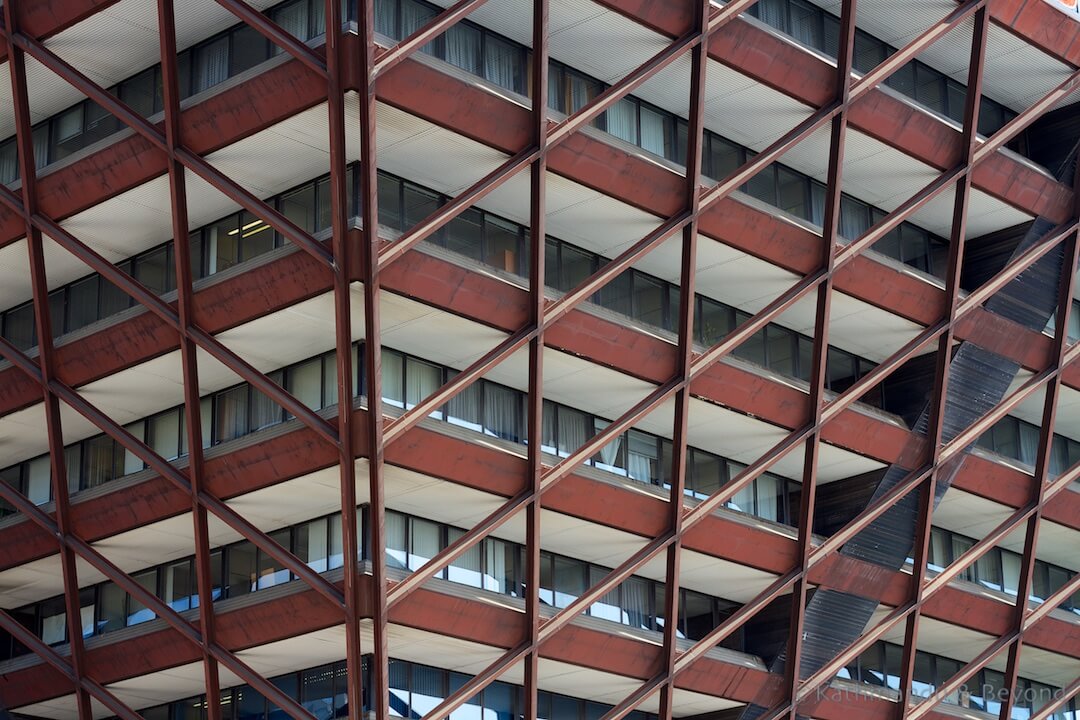 Slovak Radio Station
Slovak Radio Station
The building has several music-producing studios inside as well as a large theatre where concerts are held. Apparently, the interior is very much socialist chic. Unfortunately, we didn’t get a chance to go inside and see this for ourselves which was a shame as neither of us has ever been inside an inverted pyramid before and will probably never have the chance again!
Have you come across any interesting Socialist-era architecture on your travels? In which city?

We lived for one and a half years in Bratislava before moving back to Sweden. I even lived in Petrzalka in the beginning, which actually got really nice neighbourhoods.
Bratislava really has a lot to offer even though it is much smaller than Prague, Budapest or Vienna.
Thank you for sharing, reading this woke up some old memories. 🙂
Thank you. As you say, Bratislava is a small capital but has a lot to offer. Did you get the opportunity to explore other places in Slovakia? Any recommendations? We’re planning on going back to the region this summer … 🙂
We were just there earlier this week but missed the Slovak Radio Station (wow, that is ugly). But we did see the UFO tower over the bridge – nobody can miss that – and it’s really weird as well. Other than the weirdness we found Bratislava a charming kind of place to visit for a day (but not more!)
Frank (bbqboy)
Thank you for your comments Frank. The Radio station is still in use, fancy arriving at that every day for work? We stumbled across it on our way back to the station from the Old Town. We spent quite a few days in Bratislava in the end, more than we intended, as it turned out to be way nicer than we thought it would. The old town is compact and great for people watching and we also made it out to Devin Castle which is well worth visiting if you decide to return to the city. The only thing we didn’t do, and wish we had done, was cross the bridge and have a look around Petrzalka, which apparently is one of the largest Socialist-era housing estates in Eastern Europe. It’s a good reason to go back mind!
bellissimo ,brutalist art, I like
Excellent, glad you enjoyed it!
Slovak Radio Station looks nice and futuristic! UFO bridge is very cool!
There is certainly some eye-catching architecture in Bratislava!